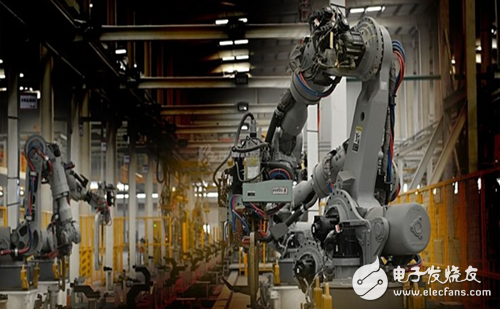Can "small scattered" play the world robot to support China to create new business cards?
Although China's robot industry has developed rapidly, the dependence of high-end robots and imports is still high, and the ability of independent innovation is still urgently needed. This obviously limits the opportunities for domestic robot companies to share the huge market cakes of Chinese robots.

Can "small scattered" play the world robot to support China to create new business cards?
What does the huge market demand space for robots mean for China? Is it like the auto industry to fall into the domestic competition, or like the high-speed rail industry to win the battle, "sail out to sea" to become a new business card made in China?
<br> <br> largest robot market since 2013, China has become the world's largest robot market. The industry consultancy high-tech industry research institute predicts that the sales growth rate of China's industrial robots from 2016 to 2017 will be 23.9% and 25.8% respectively. In 2017, the sales volume of robots will exceed 100,000 units.
According to statistics, in 2015, the number of industrial robots in China was about 250,000. According to Sun Feng, deputy director of the Equipment Department of the Ministry of Industry and Information Technology, from January to October this year, China's industrial robot production maintained a high-speed growth, with a production of 56,604 units, an increase of 71.5% over the previous year's output. According to the development plan of the 13th Five-Year Industry, it is estimated that by 2020, the annual sales and possession of industrial robots in China will exceed 150,000 units and 800,000 units respectively. By 2025, the annual sales volume of robots will reach 260,000 units.
The global technology trend report released by Frost & Sullivan, a world-renowned consulting service company, recently pointed out that next year China will become a "super robot" big country. Frost & Sullivan admits that although China is still behind some industrialized countries in terms of robot density, China has become the world's largest robot market.
Faced with such a huge market scale and optimistic market prospects, various tyrants have entered the Chinese market one after another, and the pattern of Chinese industrial robots has appeared quietly. The foreign giants represented by the four giants such as KUKA and ABB have accelerated the localization of China and further increased their market share. While foreign companies have made themselves more suitable for the Chinese market ecology through local enterprises, domestic and large enterprises are also rushing to the beach.
The robot companies of all roads are full of confidence, and the policy support is also beginning to increase. In April 2016, the Ministry of Industry and Information Technology and other three ministries jointly issued the “Robot Industry Development Plan (2016-2020)â€. The five-year overall goal of industrial development is proposed. By 2020, the annual output of industrial robots in China will reach 100,000 units.
According to the plan of the Ministry of Industry and Information Technology, by 2020, China should form a relatively complete industrial robot industry system; cultivate more than three leading internationally competitive enterprises, build more than five supporting industrial clusters, and have a product share of 50 in the high-end market. %the above.
Essence Securities believes that China's labor costs will rise, the industrial robot cost recovery period will shorten, and the industrial robot density gap will maintain the prosperity of China's industrial robots. China will also be the most promising industrial robot country. It is expected that China's robot production capacity will increase exponentially in the next few years.
The market is great, still "small, scattered," conquer the world market heat <br> <br> though unprecedented, is the development of China's industrial robot industry is technically still a big gap in the core need to be filled. The reporter found that at present, among the world's major patent applicants in the industrial robot industry, Japan's Yaskawa Electric Corporation and Fanuc Corporation rank the top two in the world with 5,823 and 45,12 patent applications respectively, Samsung, Hitachi, Honda, and Sony. Companies such as KUKA and Siemens are close behind.
Among the top 15 globally important patent applicants, Japanese companies occupy 11 seats, and their competitive advantages in patent technology are obvious. In the ranking of the top 15 related patent applications in the world, there is no one in China's domestic patent applicants, and the technical strength gap between Chinese domestic companies and international giants is obvious.
High Temperature Constant Test Chamber
High Temperature Constant Test Chamber,Pv Module Testing Test Box,Automotive Parts Testing Test Machine,Thermal Insulation Test Chamber
Wuxi Juxingyao Trading Co., Ltd , https://www.jxymotors.com